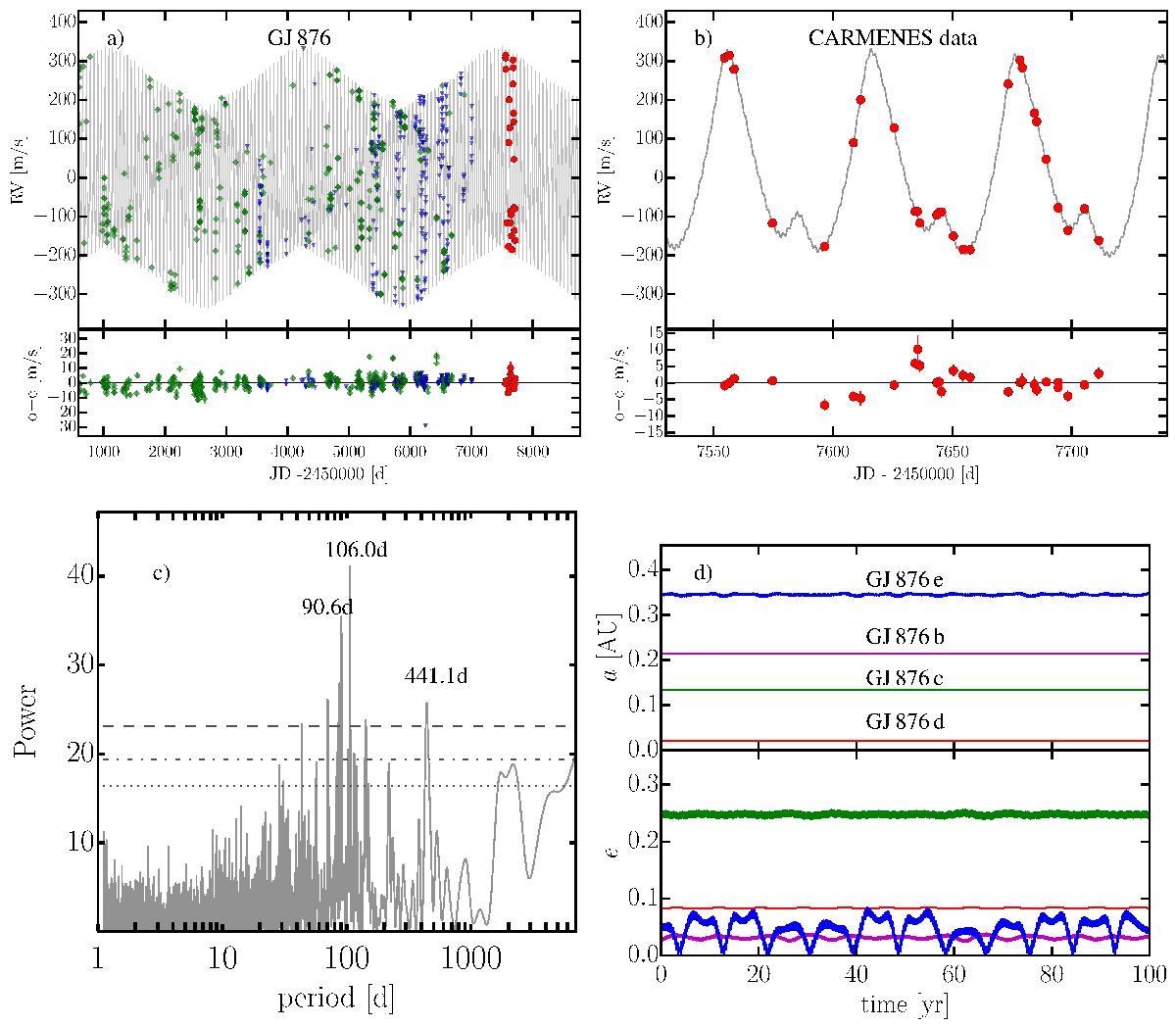Fig. 9

Data colors and symbols are the same as in Fig. 8, but for GJ 876. Panel a: the total amount of 622 precise RVs from HARPS, HIRES and CARMENES are fitted with a four-planet Newtonian model. Panel b: zoomed extent of the CARMENES data, which clearly follow the four planet model with a very low rms = 2.97 m s-1, very similar to the HARPS data with rms = 2.95 m s-1, but better than the HIRES data whose rms scatter is 4.35 m s-1. Panel c: GLS power spectrum of the residuals from the four-planet dynamical model for GJ 876 showing several peaks above FAP = 0.1% near 106.0 d, 90.6 d and 441.1 d. However, these are unlikely planetary signals (see text for details). Panel d: our updated four-planet dynamical fit is stable for 10 Myr and is consistent with a chaotic Laplace 1:2:4 MMR orbital evolution between planets b, c and e, already known for this system. Our best fit and orbital evolution of the planetary system, however, suggests smaller (compared to the literature) eccentricity (ed = 0.082) of the innermost planet GJ 876 d.
Current usage metrics show cumulative count of Article Views (full-text article views including HTML views, PDF and ePub downloads, according to the available data) and Abstracts Views on Vision4Press platform.
Data correspond to usage on the plateform after 2015. The current usage metrics is available 48-96 hours after online publication and is updated daily on week days.
Initial download of the metrics may take a while.


